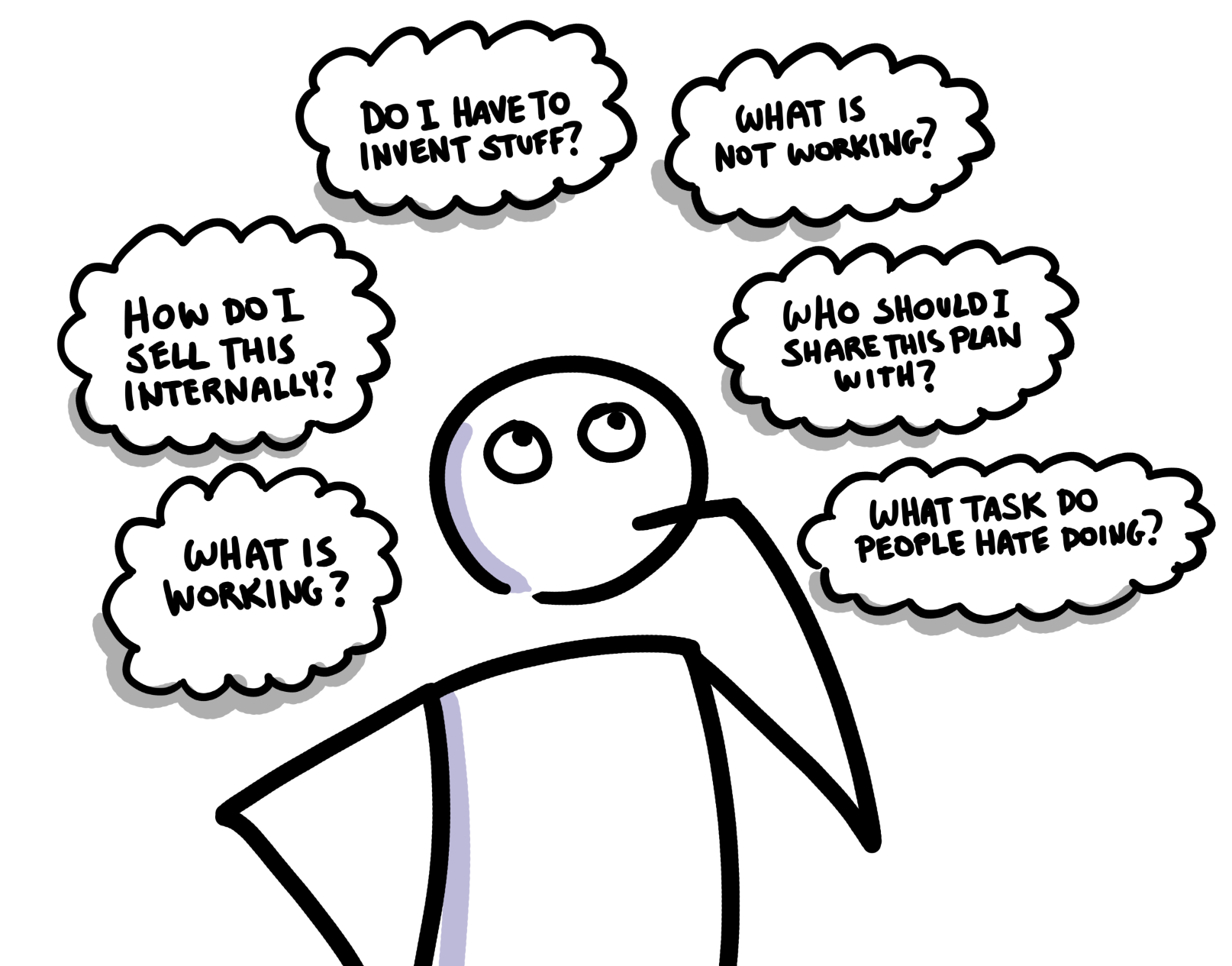An intrapreneur is an employee who adopts the mindset of an entrepreneur to foster innovation inside of a larger firm. This blog post outlines key skills that an intrapreneur must master to identify useful inventions and get them adopted inside a firm to bring new value to customers.
Intrapreneur Mindset and Key Skills
 You don’t have to invent stuff to be an intrapreneur. Just look around you – there is a good chance the person or team in the next cube or building is doing something other people or teams would benefit from. This stuff could be a process – the way something is done. Or some output – electronic design, code, art work etc.
You don’t have to invent stuff to be an intrapreneur. Just look around you – there is a good chance the person or team in the next cube or building is doing something other people or teams would benefit from. This stuff could be a process – the way something is done. Or some output – electronic design, code, art work etc.
You must think like a sales person. How to find and connect customers to solutions, but with a twist. You are not creating solutions, you are trying to find them as well as customers. So how do you find, then connect these solutions to customers and customers to solutions?
You must be able to see and observe. This visibility is generally defined by your position and role. For example–by position–managers see few projects, directors see many and VP’s see all. By role–engineers see few projects, senior engineers see many and common central engineering groups see all. Central groups like development test, release operations, project management, tools, lab services. These are central groups in engineering. Other groups that also have visibility are finance and manufacturing. Visibility also includes outside your company. Talk to friends/peers in other companies. Look for commercially available offerings.
You must be able to share and implement. Turns out if your company doesn’t have structures to share, talk about and implement the good stuff. Then there is not much hope. By structures I mean meetings where people can share what’s working well or not and groups that have people and funding to proliferate. By stuff I mean, doing something differently or in addition that has a measurable impact on time, quality, functionality, cost or performance.
You must be able to sell. This new stuff will require people to do something differently or something extra. Change is something not everyone is comfortable with especially if it’s not clear why. You need to clearly show how the project and team individuals will benefit. If you cannot do this, then stop. Collect feedback as to why the new stuff is not selling and move on. Don’t try and top down sell like a compliance or regulatory process.
You must be able to plan. Typically, a person or team that has been successful in doing something differently has worked through many issues to correct and fix to move forward. They may also ignore or work around problems very quickly. These could be a non-issue for them or something that they just put up with. Not all teams will be able to do this, so you need to plan accordingly to help them through any issues. There may be learning, or skill prerequisites needed before a person or team can be successful. You need a deployment plan.
You must be able to support and scale. The last outcome you want is for this new stuff to fail. Its critical that you have the budget and resources to execute your deployment plan. Your plan must include how to scale for all teams. Focus on what it will take for full deployment. The last thing you want is to have your momentum slow because you didn’t take into account some person or teams support needs.
Related Blog Posts
- Innovation Inside an Organization Requires Balancing Priorities
- Managing Change in an Organization: An Incomplete Resource List
- Q: Best Practices For Finding Early Adopters
- Jerry Weinberg interview
- Steve Hodas’ Lean Startup 2013 Talk Offers Recipe for Re-Invigorating Intrapreneurs
- Jeff Allison: How To Blend New Capability and New Product Development
- Jeff Allison joins SKMurphy Team to Drive Intrapreneur Focus for 2017
